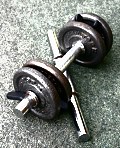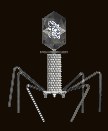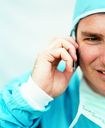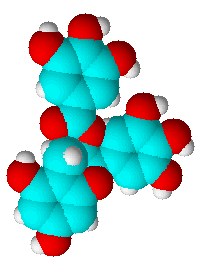 Many of the health claims of herbal medicine bear fruit for the pharmaceutical industry, leading to new drugs that are more potent and more targeted than the original remedy. In Traditional Chinese medicine there are many health claims for the likes of Ginkgo biloba and many other remedies that might bear closer scrutiny. Now, pharmaceutical chemist David Barlow and colleagues Peter Hylands and Thomas Ehrman at King’s College London have undertaken the biggest study yet of the active ingredients in TCM and used an analytical system known as a multiple decision tree technique, called Random Forest, to unearth the root of the activity of the natural products in TCM.
Many of the health claims of herbal medicine bear fruit for the pharmaceutical industry, leading to new drugs that are more potent and more targeted than the original remedy. In Traditional Chinese medicine there are many health claims for the likes of Ginkgo biloba and many other remedies that might bear closer scrutiny. Now, pharmaceutical chemist David Barlow and colleagues Peter Hylands and Thomas Ehrman at King’s College London have undertaken the biggest study yet of the active ingredients in TCM and used an analytical system known as a multiple decision tree technique, called Random Forest, to unearth the root of the activity of the natural products in TCM.
Their study seems to vindicate many of the claims of TCM as well revealing several compounds that might be indicated for diseases and symptoms not treated with in the traditional system.
The team built a database containing well over 8000 compounds from 240 of the most commonly used TCM herbs and used a second database of almost 2600 known active plant chemicals and other natural products as a training set for the Random Forest computer algorithm. The team found that about 62% of the herbs they tested in silico against various drug targets (mostly enzymes associated with pathogens or problems in the body) contained candidate drug compounds that might be isolated for treating a single disease without the associated issues of a TCM approach. They also found that more than half of these compounds worked against at least two diseases and so might have multiple applications.
You can read more about this research today on SpectroscopyNOW news round up from David Bradley. I asked Barlow about the wider application of this research and he said it might be applied equally well to other databases. “The same methodology might also be applied in screening other similar databases, constructed, for example, with reference to herbs used in Ayurvedic medicine,” he said.
 Kleenex is out, disposable arm bands are not yet de rigeur, so what’s the alternative when you just have to sneeze or cough? Use your sleeve, that’s what. It’s the most effective way to reduce the spread of cold and flu viruses. Coughing into the open air without covering your mouth simply releases a myriad of viral and bacterial particles into the air around you. If there’s no one else around that’s not so bad, but just picture those droplets of spittle and snot flying in the video we’re going to show you here and you’ll think again.
Kleenex is out, disposable arm bands are not yet de rigeur, so what’s the alternative when you just have to sneeze or cough? Use your sleeve, that’s what. It’s the most effective way to reduce the spread of cold and flu viruses. Coughing into the open air without covering your mouth simply releases a myriad of viral and bacterial particles into the air around you. If there’s no one else around that’s not so bad, but just picture those droplets of spittle and snot flying in the video we’re going to show you here and you’ll think again. Over on Alex King’s blog, they’re offering suggestions for his workout playlist. Dozens of comments have rolled in with music ranging from Eye of the Tiger to Linkin Park to Pussycat Dolls and everything in between.
Over on Alex King’s blog, they’re offering suggestions for his workout playlist. Dozens of comments have rolled in with music ranging from Eye of the Tiger to Linkin Park to Pussycat Dolls and everything in between. In 1919, long before antibiotics were commonplace and long before the notion of drug resistance had emerged, a doctor in the east European state of what is now Georgia, Felix d’Herelle, gave a patient suffering from severe dysentery a seemingly lethal concoction of viruses. You might think such a drink would kill the patient, but these were no ordinary viruses, they were bacteriophages, the nemesis of bacteria.
In 1919, long before antibiotics were commonplace and long before the notion of drug resistance had emerged, a doctor in the east European state of what is now Georgia, Felix d’Herelle, gave a patient suffering from severe dysentery a seemingly lethal concoction of viruses. You might think such a drink would kill the patient, but these were no ordinary viruses, they were bacteriophages, the nemesis of bacteria. The UK Times paper reported on Saturday that a leading cancer researcher Professor Lawrie Challis chairman of the government-funded mobile telecommunications health research programme believes it is time that a large-scale study into the long-term risks associated with cellphone use.
The UK Times paper reported on Saturday that a leading cancer researcher Professor Lawrie Challis chairman of the government-funded mobile telecommunications health research programme believes it is time that a large-scale study into the long-term risks associated with cellphone use. Researchers from Slovenia have used spectroscopy to home in on the active site of an essential bacterial enzyme, DNA gyrase. They say they now understand more clearly how a compound found in green tea, EGCG, which is a health-boosting antioxidant, works to kill bacteria.
Researchers from Slovenia have used spectroscopy to home in on the active site of an essential bacterial enzyme, DNA gyrase. They say they now understand more clearly how a compound found in green tea, EGCG, which is a health-boosting antioxidant, works to kill bacteria.